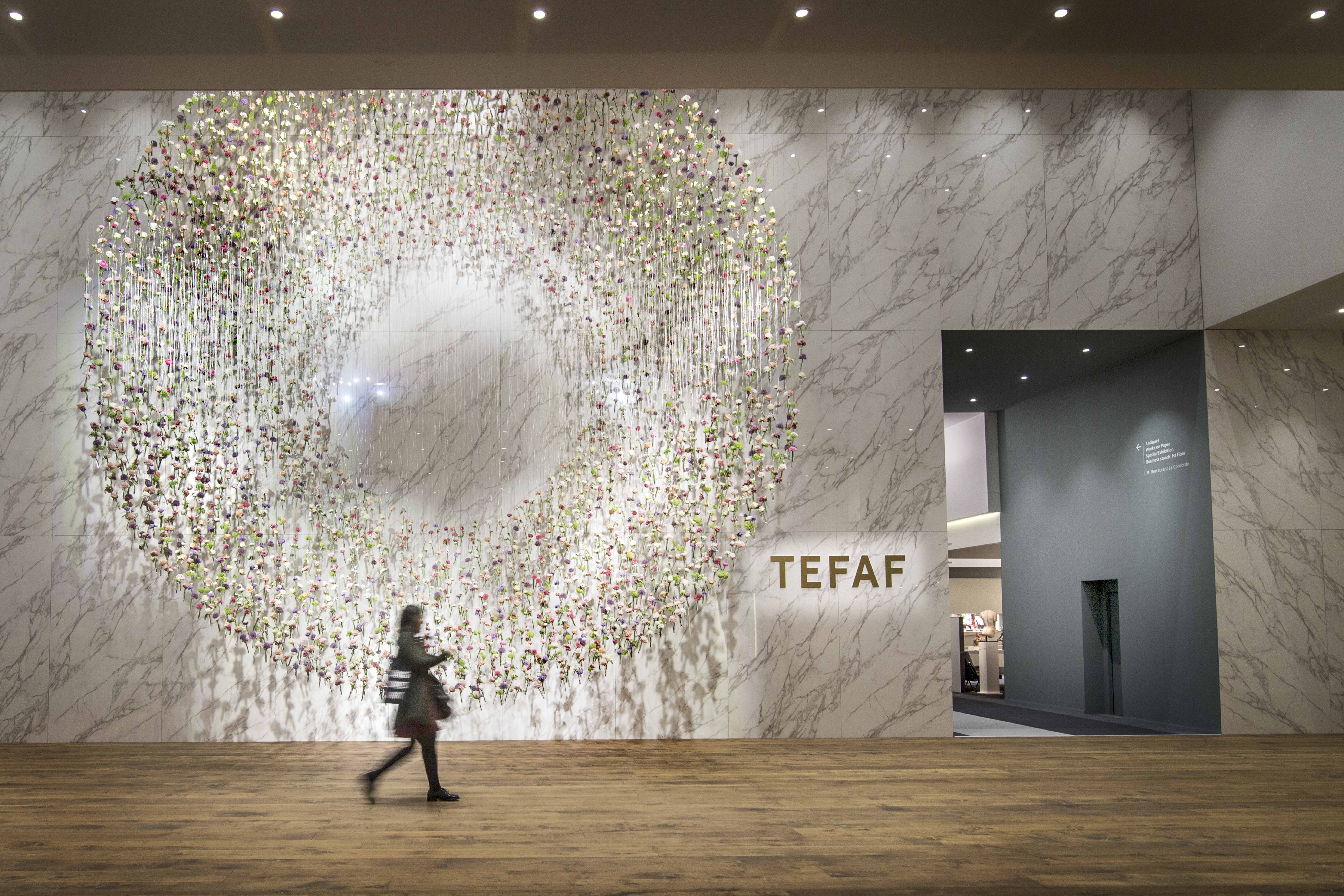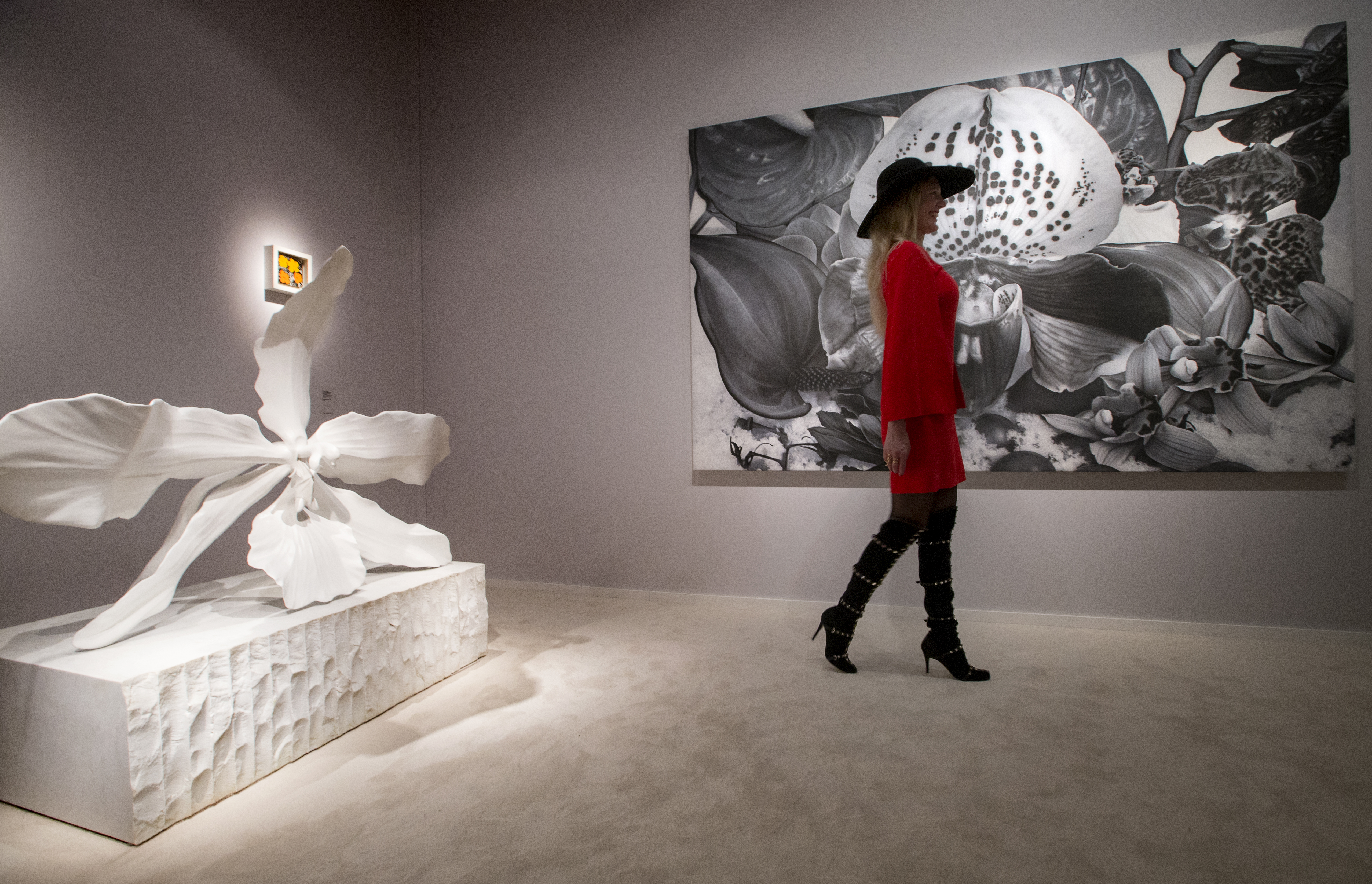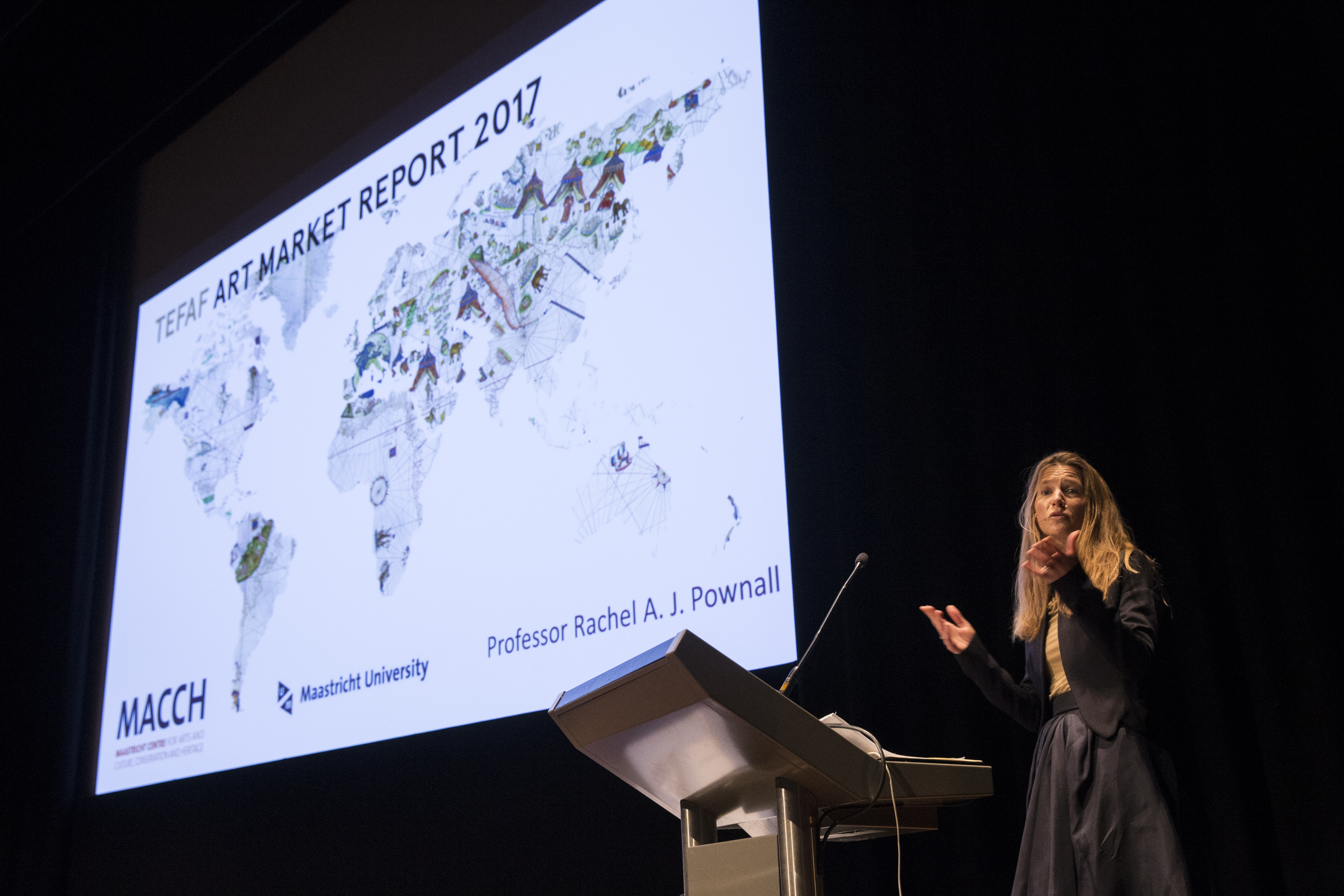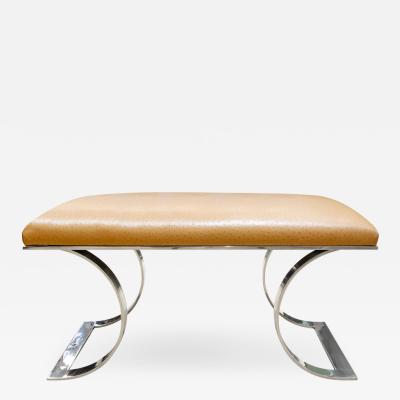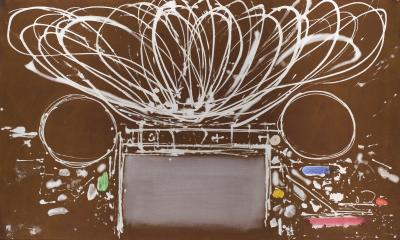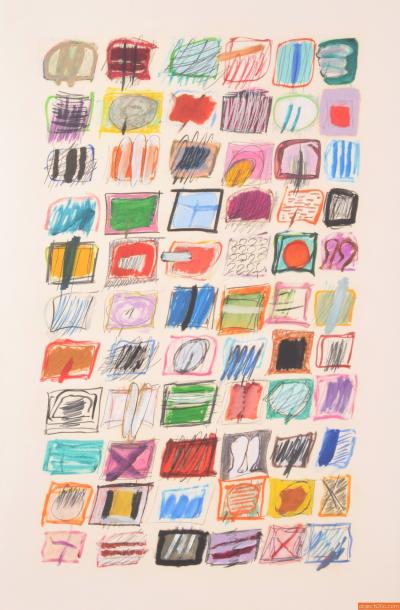At TEFAF Maastricht, Market Report Heralds New Age
TEFAF Maastricht, which opened last week, is celebrating its 30th birthday in style: the corridors of the Maastricht Exhibition and Congress Centre are festooned with roses, and visitors to the 100,000-square-foot exhibition space have been greeted by a floral nebula of thousands of flowers hung from the ceiling.

- Old-mine diamond floral spray brooch. Approximately 18 cts., set in silver and gold. English, ca. 1860. Offered by A La Vieille Russie, stand 110.
Recognized as the leading fine art and antiques fair, balanced with modern works and design, The European Fine Art Fair (TEFAF) showcases 270 internationally renowned exhibitors whose unrivalled collections attract the world’s leading collectors and curators. Among the highlights of this year’s fair, which runs until March 19, are two glittering treasures from A La Vieille Russie (stand 110): an old-mine tremblant floral spray, ca. 1860 (left), and a pair of dolphin-form candlesticks designed by Carl Fabergé, ca. 1890.
But, the talk of this year’s champagne-fueled festivities is not diamond-frosted jewelry, but a bombshell market report by Rachel A. J. Pownall, a professor at Maastricht University, that was released in conjunction with the fair.
By all accounts, the art market is a booming segment of the global economy, generating $45 billion in sales last year, a 1.7% increase compared to 2015. But, these positive figures mask an inexorable trend that auction houses would prefer not to think about: the sale of fine art and antiques is shifting elsewhere. Let’s take a look at the numbers. Global auction sales ($16.9 billion) plummeted in 2016, down 18.8% percent on the previous year ($20.8 billion). The plight of auction houses was most pronounced in the U.S., where sales at auction dropped by a whopping 41%.
What is the reason for this change? The report points out that an increasing number of collectors are moving away from the auction format in favor of the anonymity and discretion of private sales (auction houses are recognizing this interest and have been increasing their number of private treaty sales). Last year, for instance, private sales between dealers and customers accounted for 70% of all sales worldwide, with international dealer revenues increasing 20-25%.
Besides an increase in patronage at galleries, dealers state that fairs remain a strong means of meeting customers. Data also points to the value of online selling platforms to reach new buyers and gain exposure to a broader audience. Of the dealers surveyed, 67% recognize that both their own sites and those operated by a third party are of growing importance in conducting business.
In fact, online purveyors of fine art and antiques are thriving, with over 75 percent of sales under $5,000 conducted over the internet. High-end material is also selling well online. The allure of online transactions is made all the more attractive with sites like Incollect, where collectors and interior designers can browse the offerings with filtered navigation, enabling prospective buyers to locate exactly what they’re looking for and connecting them directly with dealers. (In need of “mid-century furniture” like the Arne Vodder-designed sideboard above? Click here.) There's also ample opportunituy to discover material beyond one's initial starting point.
Another feature buyers find attractive about Incollect, as opposed to auction houses and most other online selling platforms, is that they pay no commissions or fees and have direct access to the dealers and galleries. Interior designers are also becoming more active buyers on Incollect, making use of Incollect’s exclusive In the Trade program and the opportunity to take the time they need to consult with clients.
The dealers and galleries listing their art, antiques, modern, contemporary, and design material on Incollect are in sync with the TEFAF Market Report. The market has spoken. This is the dawn of a new age.















